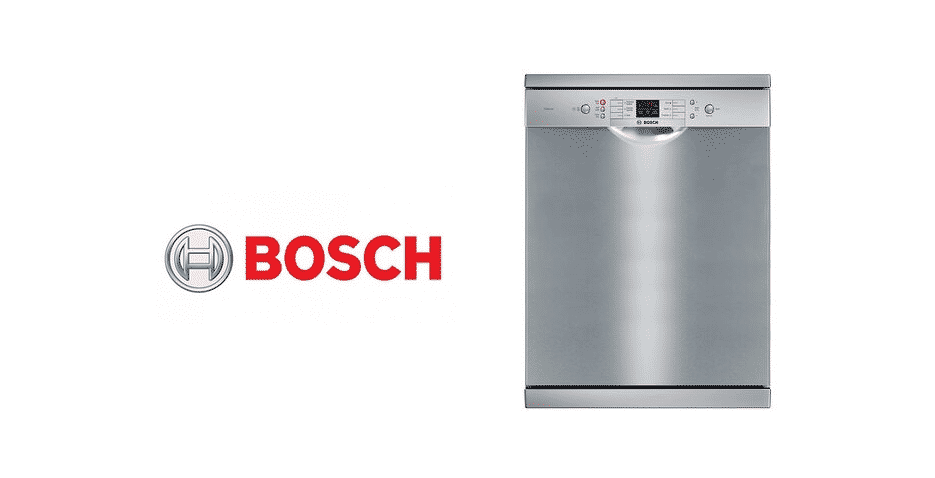
Bosch is a company that some might have heard of before. It is one of the most popular names across the globe when it comes to certain appliances meant for use in homes. The brand has been around since the 1880s and is still going strong well over a century later. There’s lots to love about certain products of as well as the brand itself. Speaking of which, one of said products is exactly what we’re going to be focusing on today. This refers specifically to the dishwashers offered by Bosch. These dishwashers have been around for a very long time, and they’ve only gotten better and better with each release.
Newer, modern versions are equipped with all kinds of different features which make them valuable parts of any kitchen. They offer convenience and efficiency in one effective package, which is exactly why these particular products from their wide range are some of the most popular. However, not every single thing about them is worth praising. An example of this are some issues, like the Bosch dishwasher not draining at times. Here are some of our most recommended solutions that users should try out whenever they encounter such a problem with these appliances from the company.
5 Solutions for Bosch Dishwasher Not Draining
- Inspect the Filter
The first recommended solution that anyone can recommend you to try out is checking out the filter inside of these dishwashers. These are one of the most important components of the entire appliance which play a huge role in keeping things clean and safe for use. This filter is a very simple thing used just to stop debris/large pieces of food from going into the drain hose so that there isn’t a clog in the future, however there are smaller pieces which can sometimes slip through. These smaller pieces usually go into the drain hose and go down without too many issues.
However, sometimes the little pieces of food can join together while passing through the filter and clog it. This prevents water from going inside of the filter and causes it to just stand there regardless of what users try. That said, there is a very simple solution and all it requires owners of these appliances to do is cleaning up the filter. We recommend consulting the manual you got along with the dishwasher before doing this for optimal results, as it’ll tell you how to do this with the specific model in question.
- Inspect the Drain Hose
Once the filter has been inspected, the next step is to inspect the drain hose. The previously mentioned small pieces of food make it through the filter just fine but it is possible that they can clog inside of the drain hose rather than directly under the filter itself. This is just as problematic, if not even more so. The reason why this can be considered an even bigger deal is because inspecting the filter is easy enough to do with the right tools. However, more than tools will be needed in this case.
Proper experience will be required, as successfully removing the correct parts to get the drain hose ready for inspection will certainly require some skill and precision. Try this yourself if you think you’re able, or get someone else to do it for you if you think that doing so might be a better option. Either way, thoroughly clean the drain hose and make sure there’s no debris or food stuck in it. Once reinstalled, try to run the dishwasher again to see if the water drains properly this time around.
- Door Issues
The next thing we recommend trying out is looking at the door of the Bosch dishwasher depending on what exact model you have. Some of the more modern options out of their selections are fully automated and run on simple commands, however there are certain limitations which come as a result of these. These are understandable limitations as they are for the safety of users. One example of this is the dishwasher ceasing most of its operation whenever users haven’t properly locked the door on the appliance.
Even if it looks like the door is shut properly, we recommend trying to open it and shutting it again. If that doesn’t work, consider conducting a brief inspection on the seal of this door. Make sure that it isn’t damaged from any point at all and that it can close properly whenever users try to get it to do so. Not only can a faulty door in a dishwasher cause issues like this one, but there are many others as well. This includes issues which can pose threats to a user’s safety, so make sure to get this particular problem checked out immediately or do it yourself if you have the means to.
- Inspect Air Gap
The next thing to check is the air gap, which is another important component in these appliances related to cleaning/draining purposes. If ever clogged up, the air gap will prevent any water from being drained and will render the dishwasher useless in some ways unless fixed as soon as possible. Luckily, this is one of the easiest things to do amongst the ones mention on this list.
The air gap is usually at the back of the dishwasher and has a rather easily recognizable look to it. Locate it and remove the cover from on top of it before conducting a thorough search. Make sure that there is nothing which could be blocking it. Much like the initial solution mentioned here, this particular fix is also much more effective when performed with the help of the user manual of your Bosch dishwasher.
- Contact Support
Contacting Bosch’s support team may be the best and possibly only option left if the solutions we’ve mentioned here weren’t of any help. Contact them and they’ll be able to provide a better fix after learning more about the specific dishwasher in question’s situation.